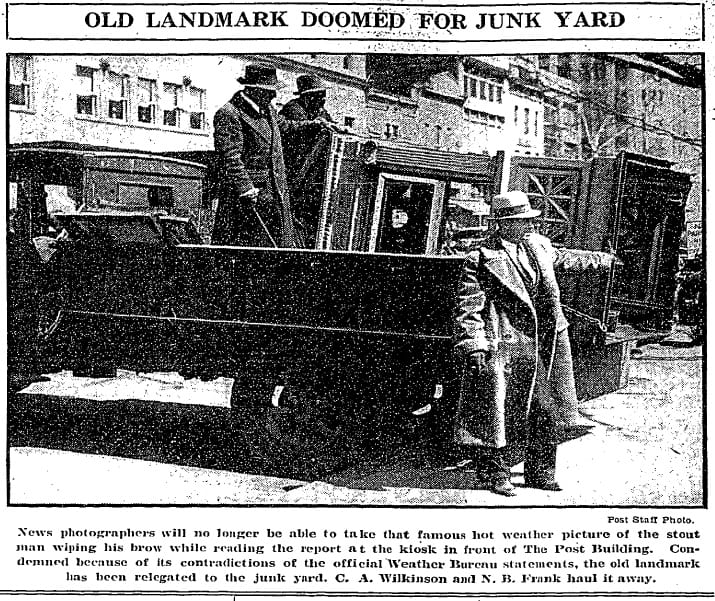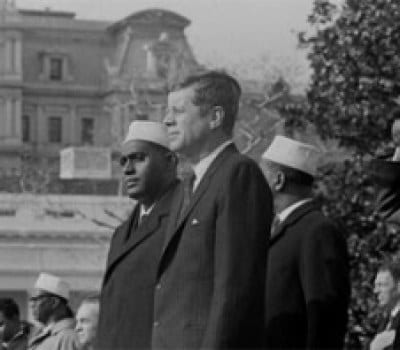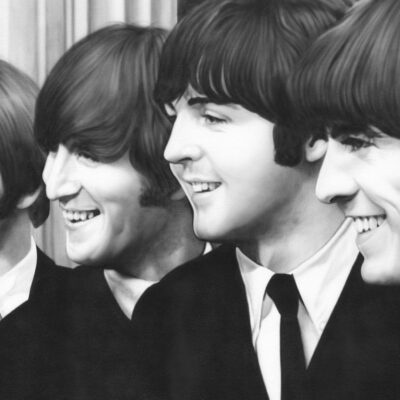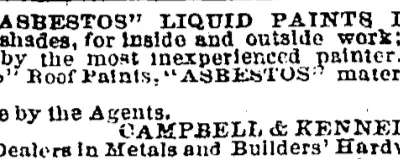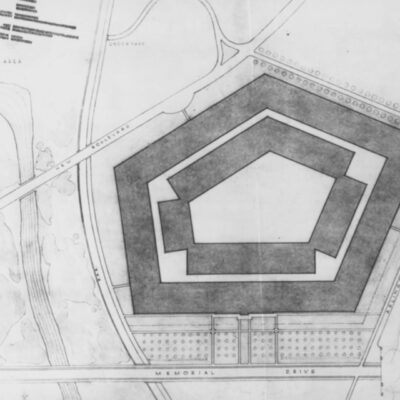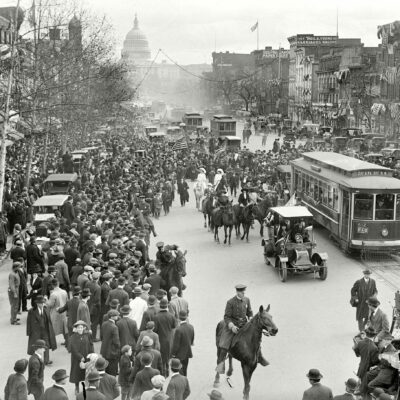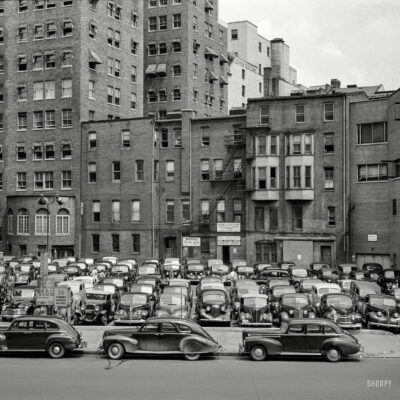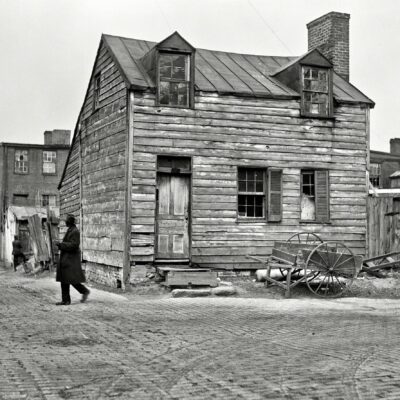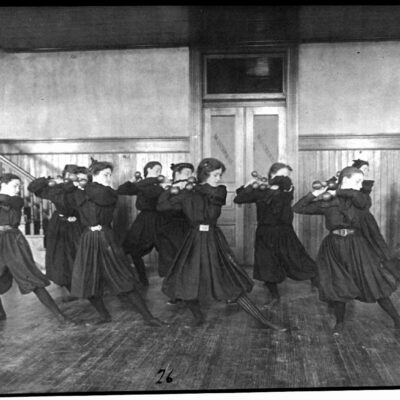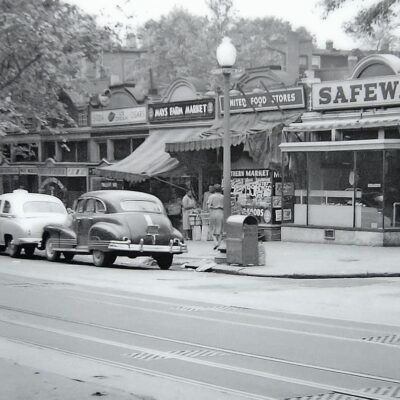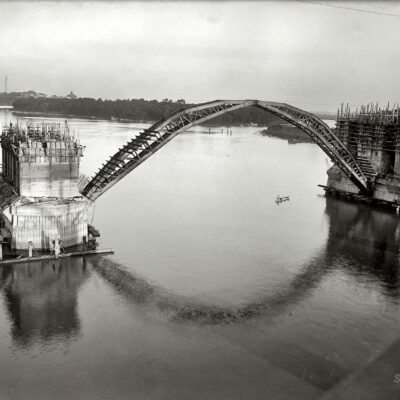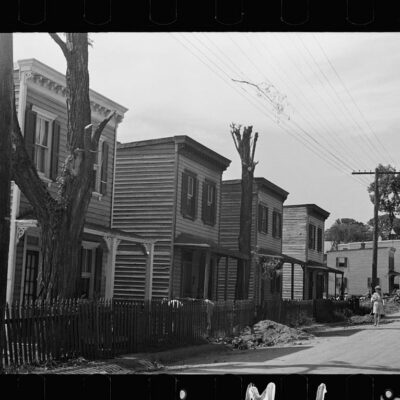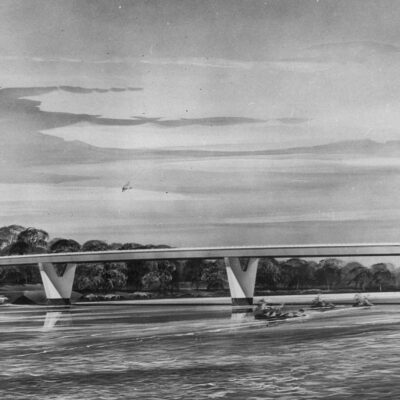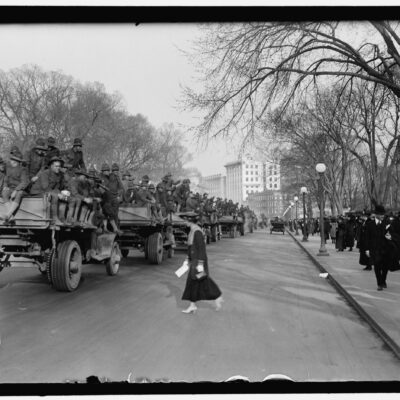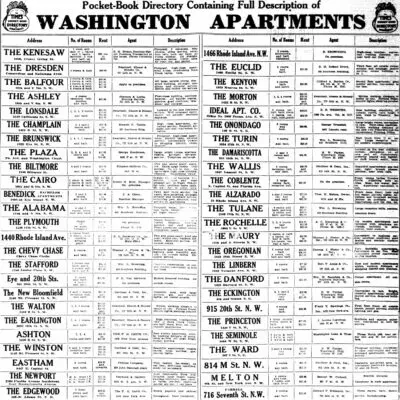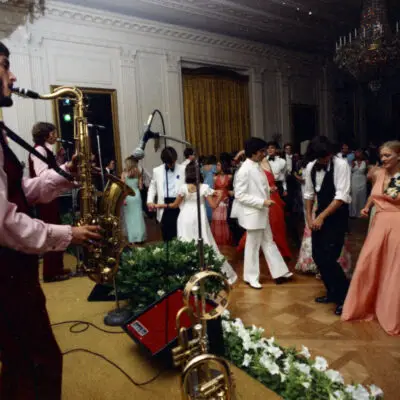This photo from 1912 shows a Weather Bureau kiosk at E Street and Pennsylvania Ave., NW. It’s a high-resolution image, so feel free to click to see some extra details.
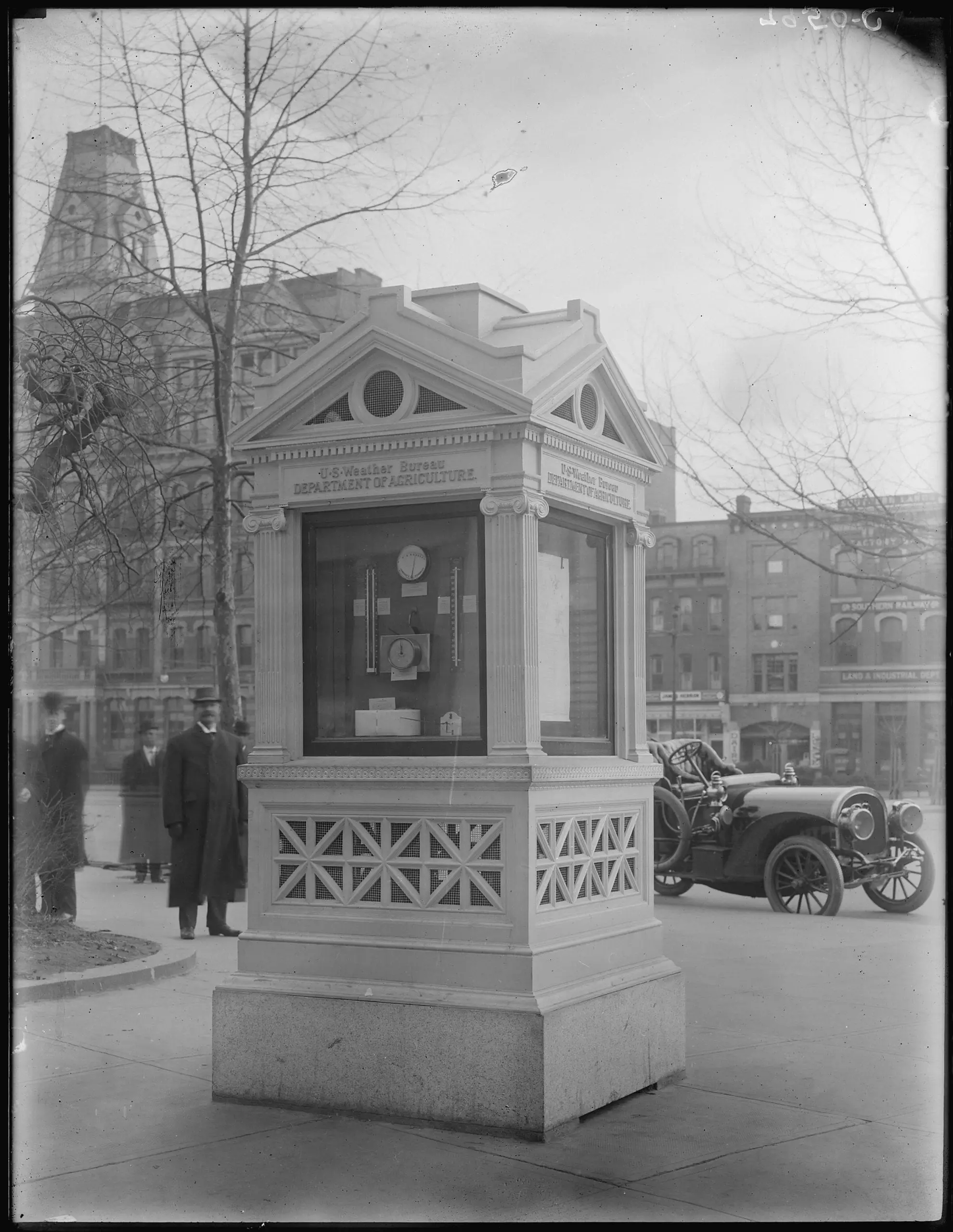
Large cities around the country had similar small weather stations installed at street level – but Washington’s was the first. (Here’s a photo of a kiosk still standing in Knoxville, Tenn.)

There were several weather monitoring devices contained inside the small structure, measuring 4 feet square and 7 feet tall. An item in the March 1909 issue of Monthly Weather Review included a photo of the D.C. kiosk and described the instruments within:
- Hygrometer. – A simple form of indicating hair hygrometer, with scale of percentages for relative humidity.
- Thermometer. – A plain mercurial thermometer, of large size (Fahrenheit); accurately stem graduated, with conspicuous figures and markings to facilitate easy reading.
- Maximum and minimum thermometers. – Indicating self-registering; Fahrenheit scale, stem graduated; of the vertical, Six type; having steel indexes to be set by permanent magnet.
- Raingage. – This is of the tipping-bucket pattern, with dial mechanisms indicating hundreths of an inch and inches of precipitation as caught in the central top of the kiosk, which forms the receiver of the gage proper, is made of copper, and is 15 inches square.
- Thermograph. – A form of mechanically recording thermometer, making a continuous automatic record of the temperature (Fahrenheit), on a two-week sheet of band form, so arranged that the previous record for several days from date is in plain view.
This was some fancy technology. An early editorial in The Post noted the fascination of passersby months after the kiosk’s arrival. The newspaper applauded the Weather Bureau for the kiosk but condemned the lack of a barometer:
It is often of the greatest importance to know the local atmospheric pressure, so that necessary preparations may be made for changes in the weather. – Washington Post, 2/27/1909
By the 1930s, Washingtonians’ love for the weather kiosk had disappeared. “A tendency to exaggerate the temperature,” was cited as the ultimate reason for the weather station’s decommissioning in 1933.
Dr. B.C. Kadel, of the Weather Bureau, said that the kiosk had an inclination to show the temperature in an unfavorable light. – Washington Post, 1/18/1933
